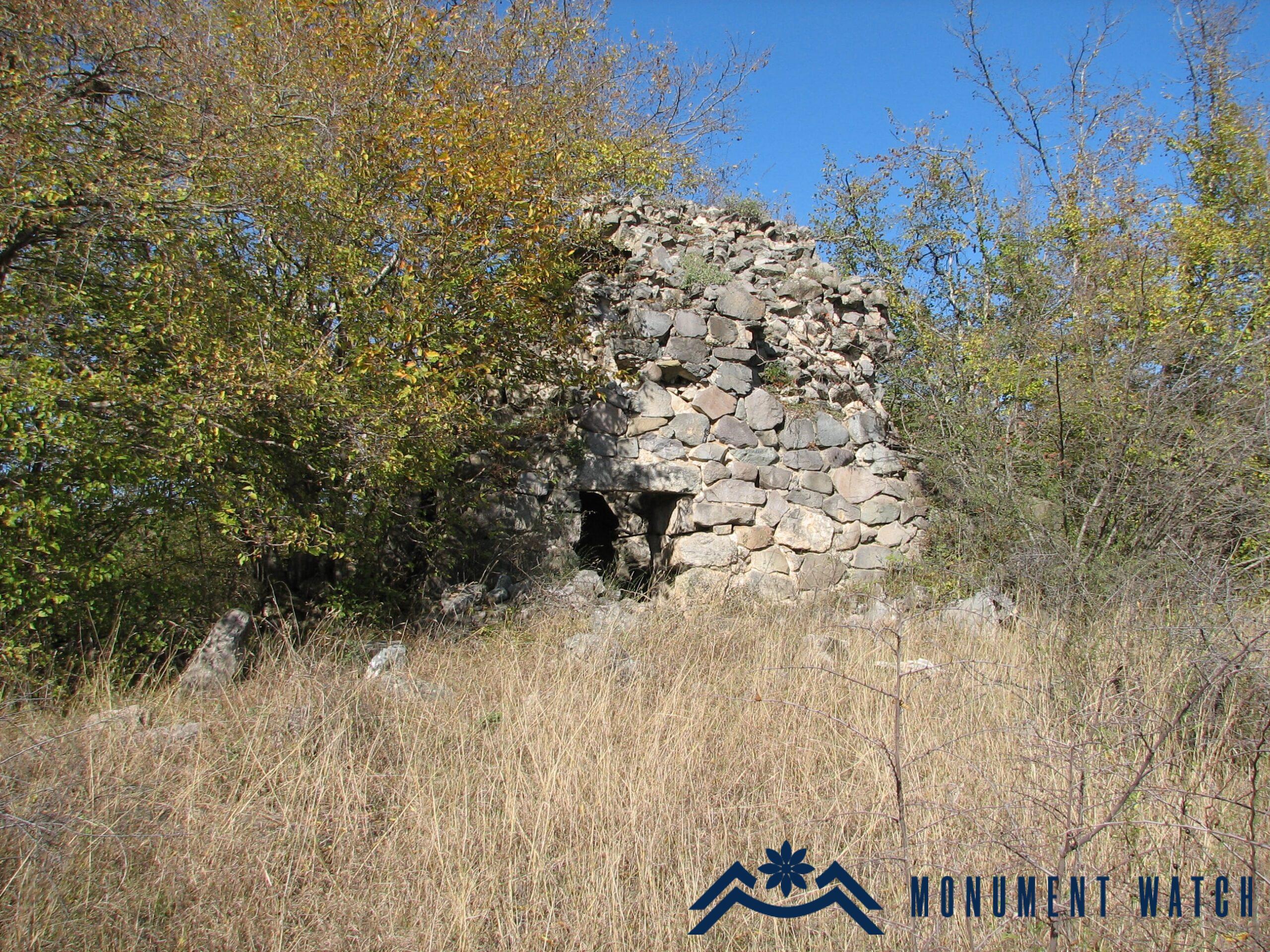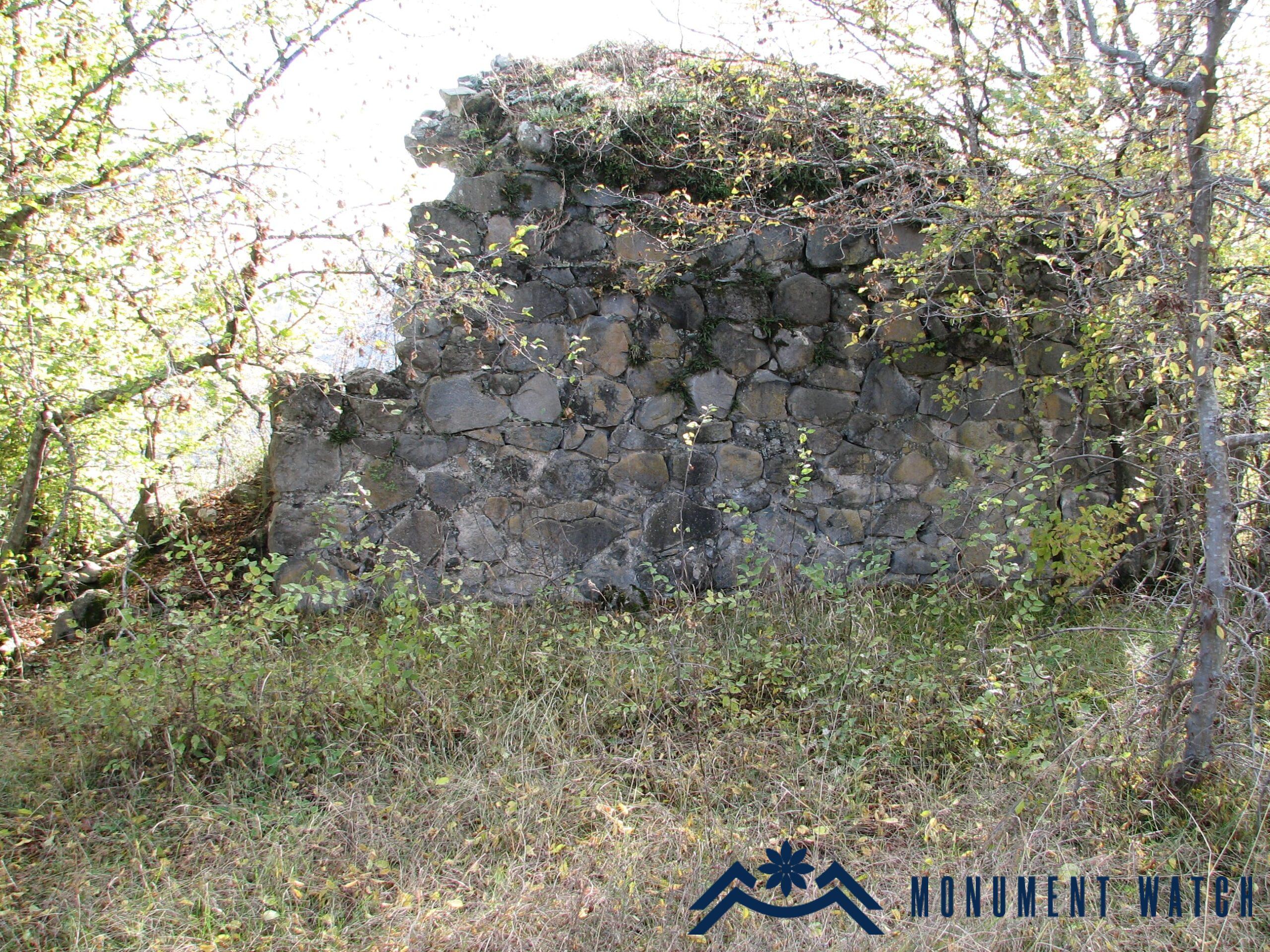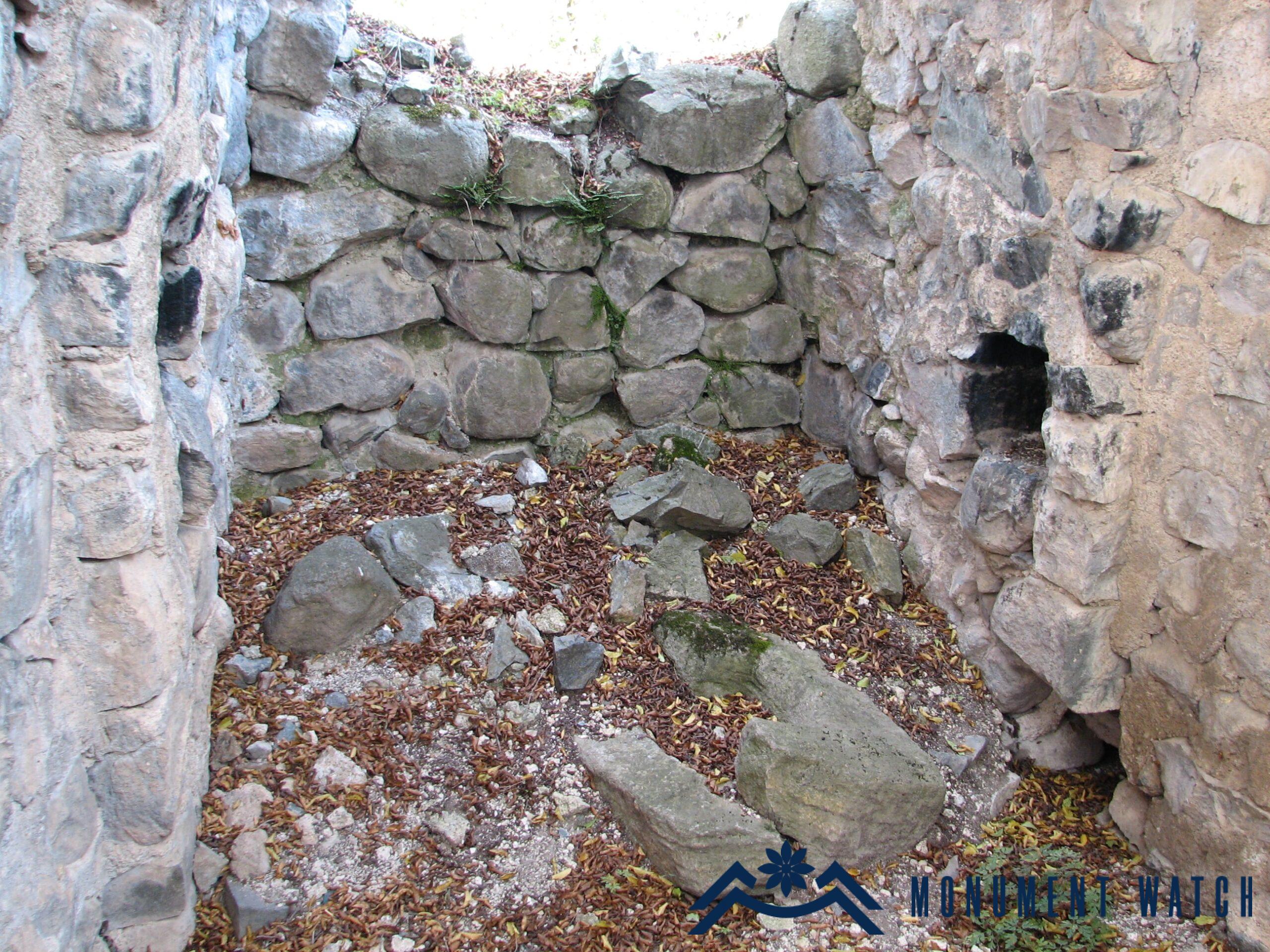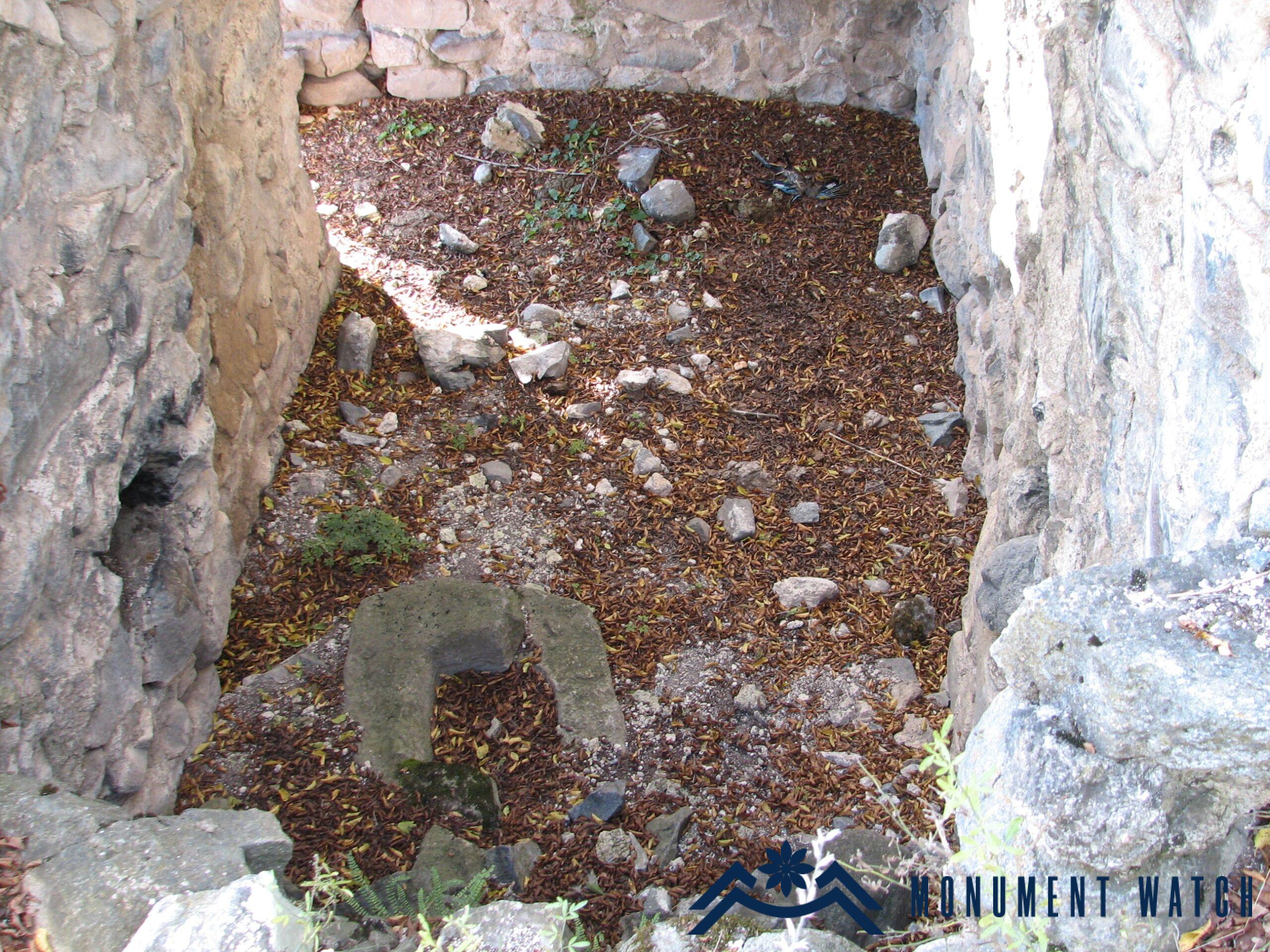The Surb Hovhannes chapel of Khantsk village
Location
The chapel is situated in the northeast of the village of Khantsk in the Askeran region of the Republic of Artsakh, positioned below the Jukhtak cross, on the left side of the stream (Figs. 1, 2) (Balayan, 2020, 74).
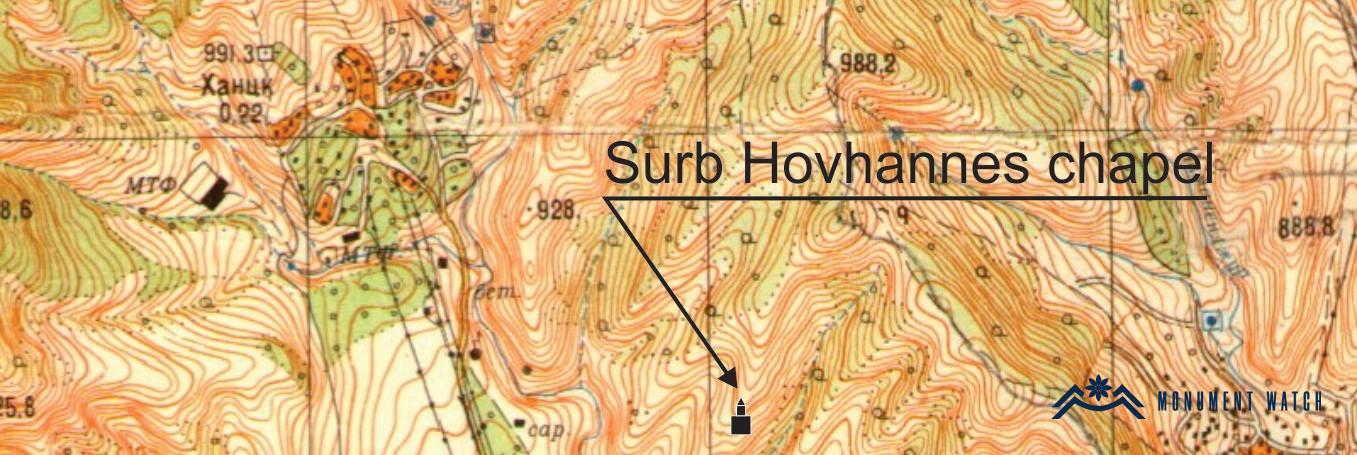
Historical overview
Historical information about the chapel is absent, and the precise date of the church is unknown. Surrounding the chapel is a cemetery, entirely covered with grass. Within the cemetery, khachkars are dating back to the 11th-13th centuries (Fig. 3). Notably, one of the khachkars bears the inscription "1204"(http://monuments.nk.am/pages.php?al=home&id=748&act1=more&act=filter&mtype=12&searchword=%D4%BD%D5%A1%D5%B6%D6%81%D6%84).
Not far from the chapel are two large khachkars, referred to by locals as Jukhtak khach. One of these khachkars bears an inscription. "For the sake of the Holy Trinity, Sostanes and Barsegh, we erected this cross to honor our father, Hayrapet, and our mother, Hramsim. Those who worship shall remember them in prayers. (1253)" (CAE 5, 143). The inscription on the khachkar is referenced by Makar Barkhudaryants, whose decipherment was utilized in describing the same khachkar in the Corpus of Armenian Lithography and reading the inscription (Barkhutareants, 1895, 160). Barkhudaryants also describes the chapel: "Below the Jukhtak (double) crosses, on the left side of the stream, there is a chapel built of stone, near which there is also a cemetery" (Barkhutariants, 1895, 160).
Architectural-compositional examination
The church is constructed using rough and unprocessed large and small stones, bound together with lime mortar. Only the entrance area is polished. It features a rectangular, single-nave structure with internal vaulting, and the apse is also rectangular. The dimensions of the monument measure 4.5 x 4.0 meters. The sole entrance is located on the south side. Inside the chapel, there are small niches (Figs. 4, 5).
The condition before and after the war
The chapel remained undamaged during the Artsakh wars but remains partially ruined. It is currently under the control of Azerbaijan.
Bibliography
- Barkhutareants 1895 - Barkhutareants M., Artsakh, Baku.
- Balayan 2020 - Balayan V., Outlines of the History of Settlements of the Republic of Artsakh, Yerevan.
- CAE 5 - Corpus of Armenian Lithography, Issue 5, Artsakh/compiled by S. Barkhudaryan, Publishing House of the Academy of Sciences of Armenian Soviet Socialist Republic, Yerevan, 1982.
- The Surb Hovhannes Church of Khantsk village, http://monuments.nk.am/pages.php?al=home&id=748&act1=more&act=filter&mtype=12&searchword=%D4%BD%D5%A1%D5%B6%D6%81%D6%84.
The Surb Hovhannes chapel of Khantsk village
Artsakh
